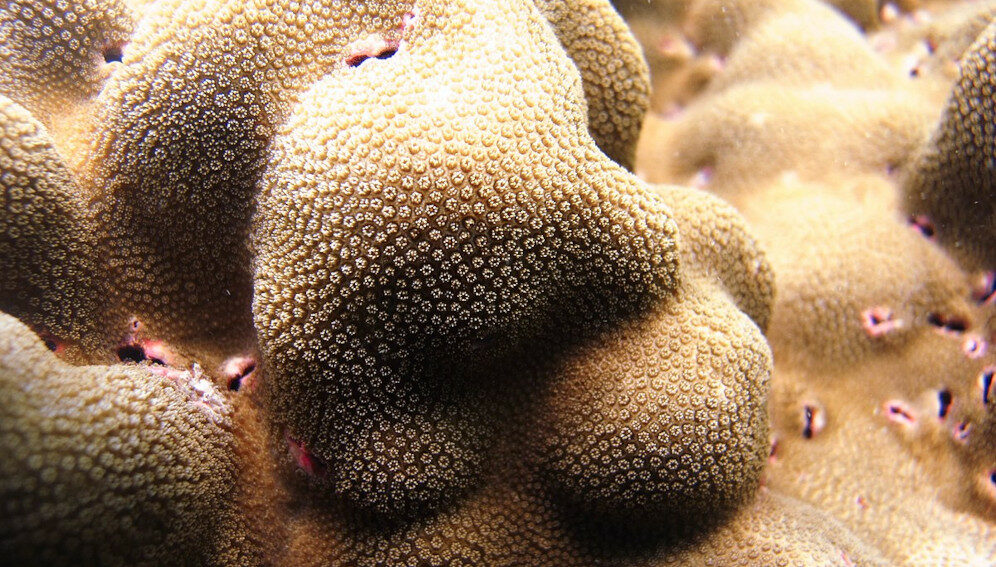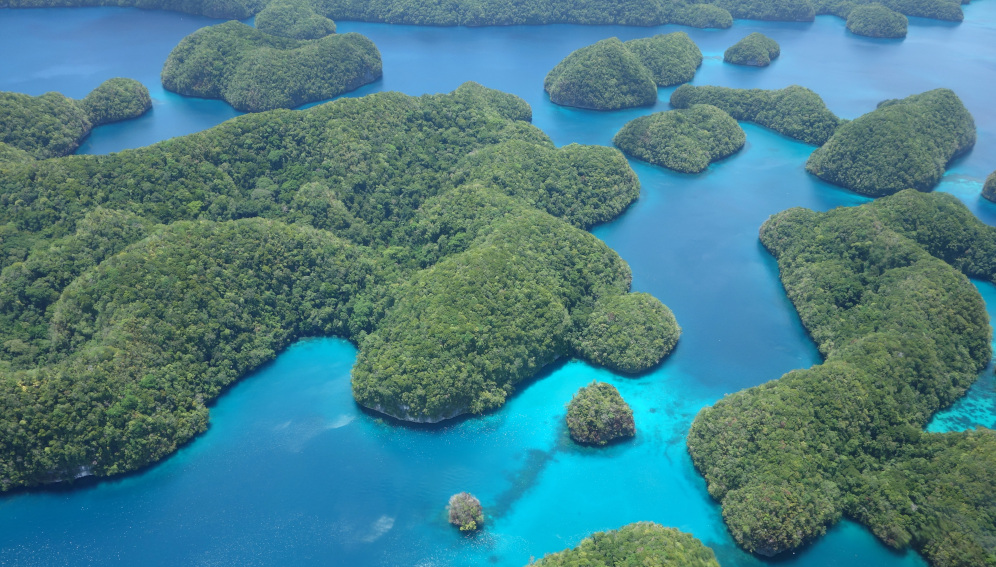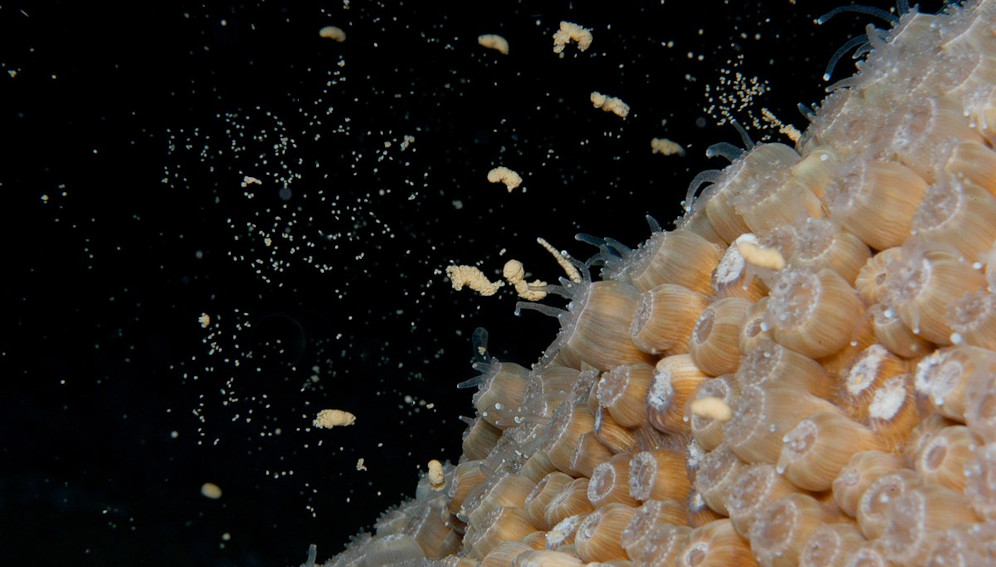
Porites lobata is one of the most common corals in the Indo-Pacific region and is considered a resilient coral species.
Speed read
- Sea warming continues to bleach and destroy coral reefs
- Scientists identify coral species genetically adapted to warming
- Such species can help repopulate damaged reefs with corals
A team of marine scientists studying reefs in the Pacific island of Palau have identified genetic subgroups of a common coral species that exhibit tolerance to the extreme heat associated with marine heatwaves.
Coral reefs that protect coasts against flooding and provide food, income and protection for more than half a billion people around the world are under threat from rising sea temperatures, says a paper released by the UN Framework Convention on Climate Change. Between 2009 and 2018, the world lost roughly 11,700 square kilometres of its coral reefs.
“In the Rock Islands, we know the corals we studied are genetically adapted to high temperatures although we don’t yet know what genes are involved”
Anne Cohen, Woods Hole Oceanographic Institute
Publishing their findings in Communications Biology, the researchers said they found evidence that larvae from these corals travel from their birthing grounds deep in Palau’s lagoons to the outer reef, where they survive and grow.
“Coral can be heat-resistant for different reasons. In the Rock Islands, we know the corals we studied are genetically adapted to high temperatures although we don’t yet know what genes are involved,” says paper co-author Anne Cohen, a researcher with the Woods Hole Oceanographic Institute (WHOI), in Massachusetts, US.
According to the researchers, a network of very ancient, fossilised reefs has been naturally raised to form a series of mountains known as the Rock Islands in Palau’s main lagoon. These formations slow water flow in and around them, creating localised environments in which the water temperatures are consistently higher than in other areas of Palau’s reefs.

Corals from the Rock Islands were found to have bleached less than from other areas of the reef during the 1998 heatwave.
The researchers sampled the keystone coral species Porites lobata (lobe coral) across Palau, including the Rock Islands. Skeletal biopsies were taken and the cores examined for stress bands, which are telltale signs of bleaching — a stress response that corals have too high temperatures.
Not surprisingly, Cohen says, they found corals from the Rock Islands bleached less during the intense 1998 heatwave than corals from other areas of the reef, indicating enhanced thermal tolerance.
The researchers believe this had to do with distinct lineages found within the same species resulting in the Rock Islands providing naturally tolerant larvae to neighbouring areas.
“When we find the coral communities that are heat-tolerant or bleaching-resistant, we can protect them from other stresses that can kill them — like dynamiting, overfishing, or coastal development — so they can produce millions of larvae that will travel on the currents, outside of their places of origin as we see in Palau. They can then repopulate reefs that have been devastated by heatwaves,” adds Cohen.

Larvae from corals can travel from their birthing grounds to neighbouring areas.
“Ocean warming is very dangerous for coral reefs because most corals living today are comfortable over quite a small temperature range,” she stresses. “When the water temperature rises 1 degree Celsius above what the corals are used to, a series of responses kick in which can end up killing them. This research shows there are coral communities that can manage much greater changes in temperature and remain healthy.”
In addition to understanding how these heat-resistant corals work and what makes them resilient, the researchers also hope to use them in restoration efforts.
“Nevertheless, not all heat-resistant corals will survive restoration or can be successfully transplanted to new environments,” Cohen says. “Therefore, we want to find many coral communities like those in Palau, so we have a large pool of heat-resistant corals… many species and within species, a diversity of genotypes. We need the diversity of genotypes to match the diversity of environments we want to restore.
“We have to be very careful about transplanting corals from one coral reef to another, for example, taking corals from Palau to the Great Barrier Reef. Coral colonies house many different organisms, not just the coral animal, including microbes, fungi, algae, and invertebrates such as crabs and shrimp. When you introduce a coral to a new reef, all these organisms come along as well, running the risk of introducing new diseases or invasive species that could overrun the indigenous species.”
Cohen emphasises that protecting heat-tolerant corals is not a long -term solution to the climate crisis. “It is a ‘band aid’ that is urgently needed. It has an uncertain life span. We don’t know what the temperature limit is, only that there most likely is one. We only will succeed in sustaining coral reefs in the long-term if we simultaneously stabilise the climate, regulate emissions, and work to reduce greenhouse gases in our atmosphere.”
Drew Harvell, a professor of ecology and evolutionary biology at Cornell University, in New York, says research detecting thermally-tolerant corals in Palau’s Rock Islands is critical in detecting and mapping resilient lineages of reef-building corals to climate warming.
“The work is key in both detecting thermally tolerant lineages and showing they can spread from bleaching resilient to bleaching impacted reefs. Palau is a particularly good site for nurturing resilient strains of coral because the inner wave-protected rock islands are subject to unusual warming events relative to the outer reefs,” Harvell says.
The researchers, she believes, “have made an excellent choice in studying the boulder coral, Porites lobata, because it is one of the most common corals on Palau and throughout the Indo-Pacific. It is a resilient species, by virtue of its ability to feed heterotrophically in addition to photosynthesizing and one where relocation of heat-tolerant lineages might be successful”.
Harvell said that because the boulder coral is an unusually long-lived species, the scientists had an opportunity to quantify the frequency of stress events recorded in the skeletons of Rock Island and Outer Reef corals and show reduced stress events recorded in corals from the warmer Rock Island habitats.
The study offers an example for coastal managers in a warming climate to help find, map, and protect locations resilient to climate warming that can reseed future coastal habitats, she said.
